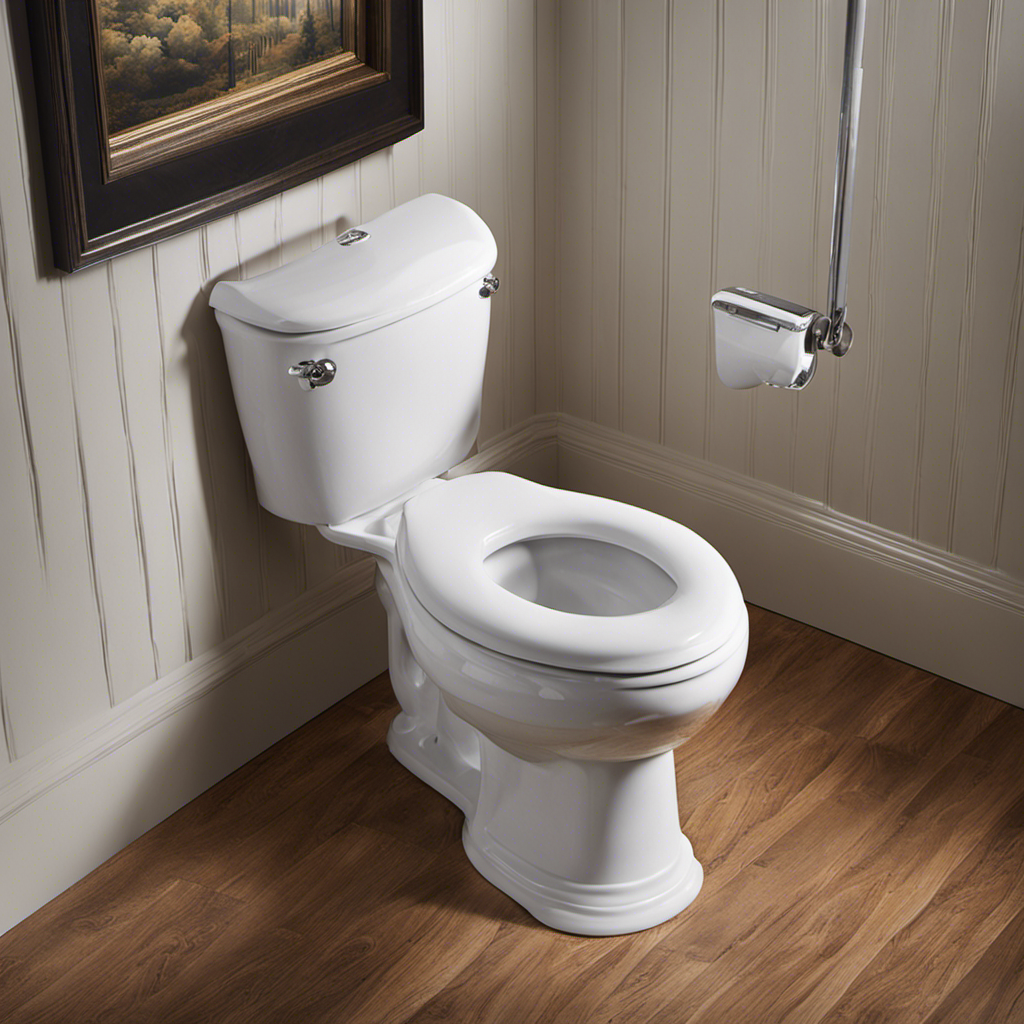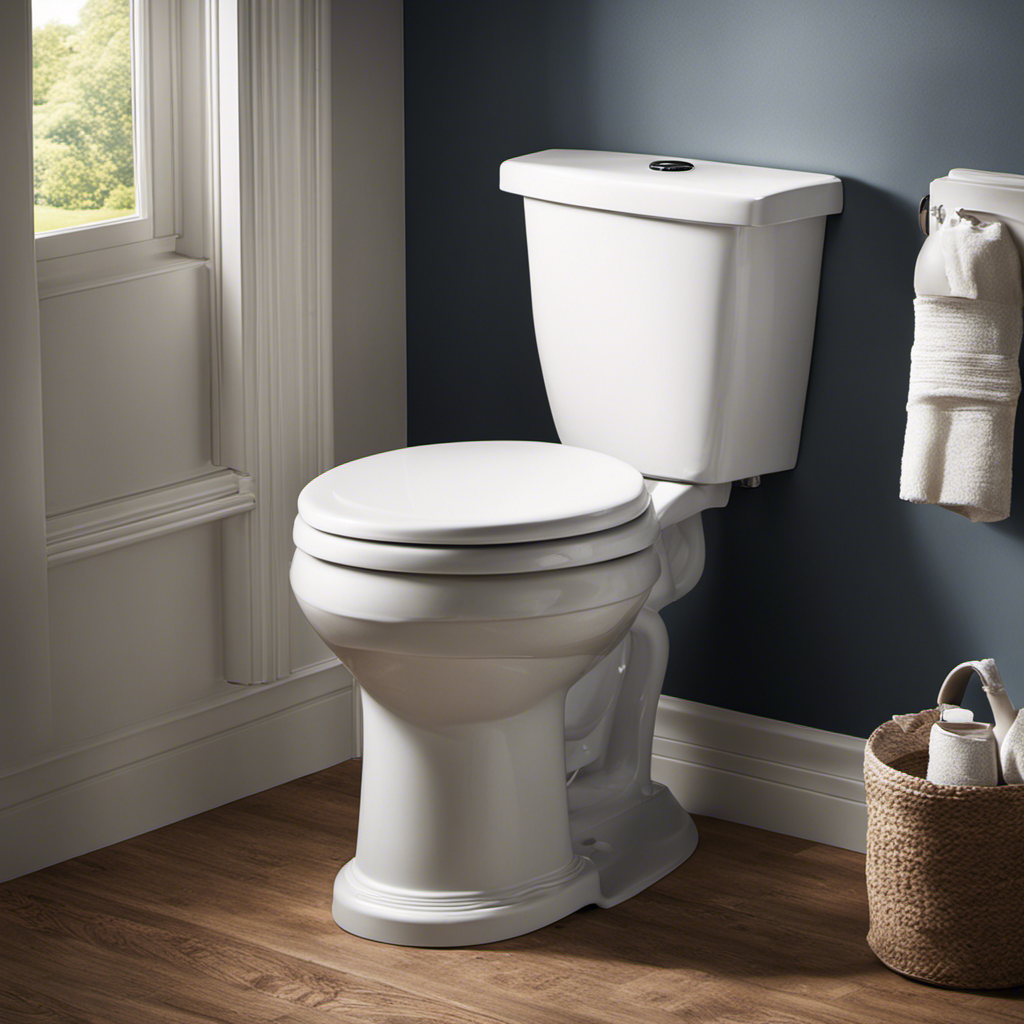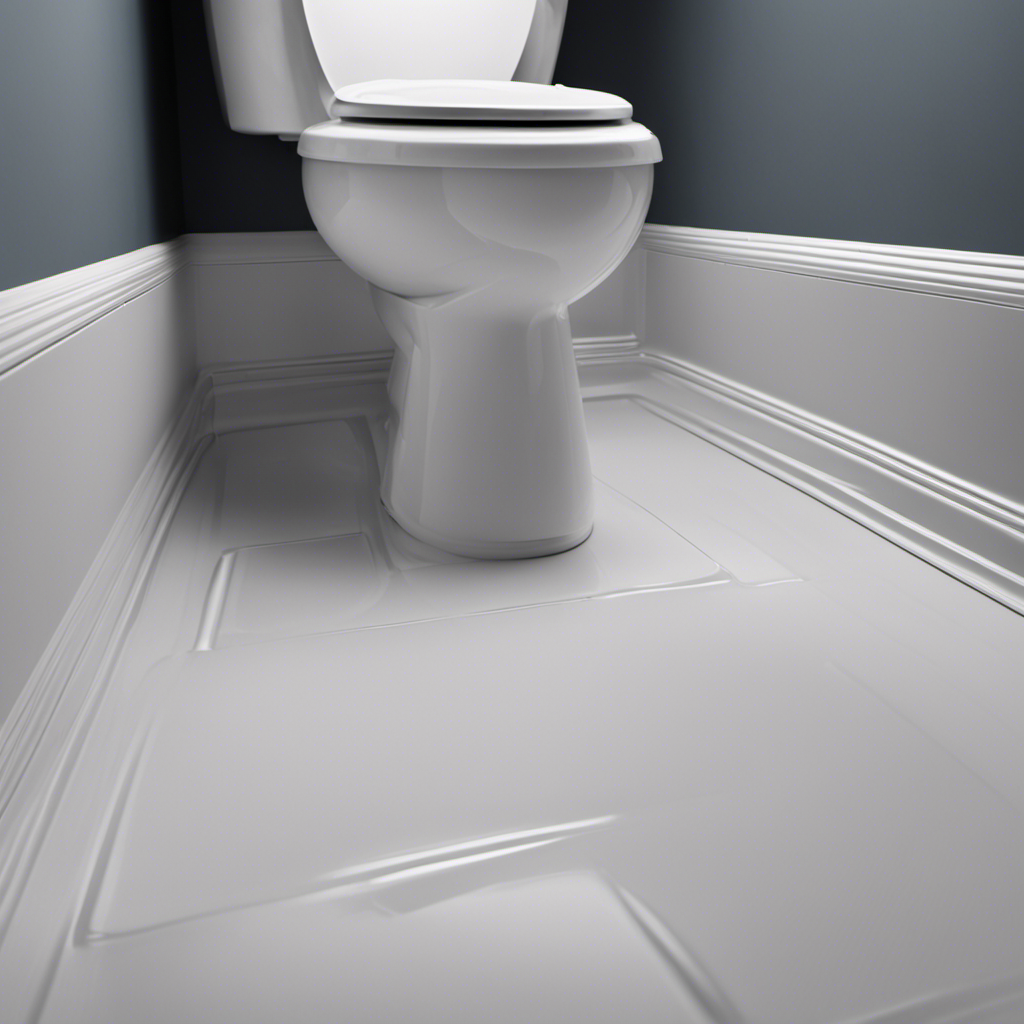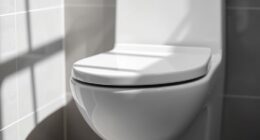Alright folks, listen up. Ever had a broken toilet in your life? Well, I’ve been there, and let me tell you, it’s not a fun situation to be in.
But fear not, because I’ve got you covered. In this article, I’m going to show you step-by-step how to fix that problematic toilet of yours.
We’ll tackle everything from leaks and clogs to running toilets and faulty flushes.
So grab your tools, roll up your sleeves, and let’s get to work.
Key Takeaways
- Leaks can be identified by checking for water pooling around the base or visible cracks in the porcelain.
- Common causes of leaks include a faulty wax ring or loose connection.
- Essential repair tools for fixing a broken toilet include an adjustable wrench, plunger, screwdriver, and bucket.
- Replacement materials for toilet repair may include a toilet flapper, fill valve, toilet flange, and wax ring.
Identifying Common Toilet Problems
The first step in fixing a broken toilet is identifying common problems. These can include leaks or a clogged drain. To troubleshoot these issues, start by checking for leaks. Look for water pooling around the base of the toilet or any visible cracks in the porcelain. If you notice a leak, it could be a faulty wax ring or a loose connection. Tightening the bolts or replacing the wax ring should solve the problem.
If the toilet is not flushing properly, the drain may be clogged. Use a plunger to create suction and dislodge the blockage. If that doesn’t work, you may need to use a toilet auger to remove the obstruction.
Once you have identified the problem, you can move on to gathering the necessary tools and materials for the repair.
Tools and Materials Needed for Toilet Repair
When it comes to repairing a toilet, having the right tools is essential. The essential repair tools include a plunger, a toilet auger, an adjustable wrench, and a screwdriver.
In addition to the tools, you will also need required replacement materials such as a toilet flapper, a fill valve, and a wax ring.
Essential Repair Tools
To fix your broken toilet, you’ll need a few essential repair tools. Here are four items that are crucial for toilet repair:
-
Adjustable wrench: This tool is needed to loosen and tighten nuts and bolts. It will come in handy when removing and replacing parts such as the flush valve or fill valve.
-
Plunger: A plunger is an indispensable tool for unclogging toilets. It creates pressure that dislodges any blockage in the pipes. Make sure to have a good quality plunger with a strong suction cup.
-
Screwdriver: A screwdriver with both flathead and Phillips head attachments is necessary for removing screws on the toilet tank or seat. It will help you access and replace various components.
-
Bucket: A bucket is essential for collecting water from the toilet tank or bowl. It allows you to empty the tank before performing any repairs or maintenance.
Having these essential repair tools on hand will make tackling toilet issues much easier. Remember to follow proper safety precautions and consult professional help if needed. Happy toilet repair!
Required Replacement Materials
You’ll need a few replacement materials for your toilet repair, such as a new flush valve or fill valve. In addition to these, there are two more crucial items you’ll need: a toilet flange and a wax ring.
The toilet flange is a ring-shaped device that connects the toilet to the drainpipe and provides a secure base for the toilet. The wax ring, on the other hand, creates a watertight seal between the toilet and the flange, preventing leaks. These two components are essential in ensuring a properly functioning toilet.
Now that you have all the necessary replacement materials, let’s move on to the next section, where I will guide you through the steps to fixing a leaking toilet.
Steps to Fixing a Leaking Toilet
When it comes to fixing a leaking toilet, there are three key steps to follow.
First, I need to identify the exact location of the leak. This can be done by carefully inspecting the toilet and looking for any signs of water or moisture.
Once the leak has been identified, I will need to replace any faulty parts that are causing the issue. This may involve replacing the flapper, fill valve, or any other components that are damaged or worn out.
Identify the Leak
First, check for any visible signs of a leak in your toilet. Look for water pooling around the base or on the floor nearby. If you don’t see any obvious signs, you’ll need to dig deeper to find hidden leaks.
Here’s how to determine the water source:
-
Inspect the water supply line: Start by examining the connection between the water supply line and the toilet tank. Look for any drips or wetness around the area.
-
Check the toilet tank: Remove the tank lid and listen for any hissing sounds. This could indicate a leaking flapper valve or a faulty fill valve.
-
Examine the toilet bowl: Look for any cracks or breaks in the porcelain. These can often be the cause of hidden leaks.
-
Test the wax ring: Gently rock the toilet bowl back and forth. If it moves, it may indicate a faulty wax ring that needs to be replaced.
Replace Faulty Parts
Now that I have identified the leak in my toilet, it’s time to replace the faulty parts. To do this, I will need a few tools such as a wrench, pliers, and a new replacement part for the specific component that is causing the issue.
First, I will shut off the water supply to the toilet by turning the shut-off valve clockwise. Then, I will flush the toilet to drain any remaining water in the tank and bowl.
Next, I will carefully remove the old faulty part, such as the flapper or fill valve, depending on the specific issue. I will follow the manufacturer’s instructions or online tutorials for the correct removal and installation process.
If I am unsure about any step or encounter difficulties during the process, it is always recommended to seek professional assistance. A plumber can provide troubleshooting tips and ensure the replacement is done correctly.
Once the faulty part is replaced, I can move on to the next step of testing the toilet for functionality.
Test for Functionality
To ensure everything is working properly, you should give the toilet a test flush after replacing the faulty part. Here are the steps to test the functionality of your toilet:
- Close the toilet lid and seat securely.
- Press the flush handle or button firmly and hold it down for a few seconds.
- Observe the water level in the bowl. It should rise and then quickly drain away.
- Listen for any unusual sounds or vibrations during the flush.
Troubleshooting and Fixing a Clogged Toilet
If your toilet is clogged, you can try using a plunger to fix the issue. First, make sure to wear rubber gloves to protect your hands.
Position the plunger over the drain hole in the toilet bowl, ensuring a tight seal. Apply downward pressure and push the plunger in and out vigorously. This action creates suction and helps dislodge the clog. Repeat the process several times if necessary.
If the plunger doesn’t work, you can try using a toilet auger. Insert the auger into the drain hole and rotate the handle clockwise to break up the clog. Be careful not to scratch the porcelain.
If these DIY methods don’t work, it may be time to call a professional plumber for further assistance. Regular toilet bowl maintenance and DIY toilet repairs can help prevent clogs and keep your toilet functioning properly.
Repairing a Running Toilet
One possible contraction: ‘You can try adjusting the float valve to stop the toilet from running.’
Here’s a step-by-step guide on how to repair a running toilet:
-
Turn off the water supply: Locate the shut-off valve behind the toilet and turn it clockwise to stop the water flow.
-
Remove the tank lid: Lift the lid off the tank and set it aside.
-
Inspect the float valve: Check if the float valve is stuck or damaged. If it’s damaged, you may need to replace it.
-
Adjust or replace the float valve: If the float valve is stuck, adjust it by bending the float arm slightly. If it’s damaged, replace it with a new one.
To fix a toilet that won’t flush, you may need to repair a broken toilet handle. Here’s how:
-
Remove the tank lid: Lift the lid off the tank and set it aside.
-
Disconnect the chain: Locate the chain connected to the handle and disconnect it from the flush valve.
-
Replace the handle: Unscrew the nut holding the handle in place and remove the old handle. Install the new handle by screwing the nut back on.
-
Reconnect the chain: Attach the chain to the flush valve and adjust its length if needed.
Replacing or Repairing a Faulty Toilet Flush
By following these steps, you should be able to replace or repair a faulty toilet flush.
First, turn off the water supply to the toilet by shutting off the valve located behind the toilet.
Next, flush the toilet to drain out any remaining water.
Remove the toilet tank lid and locate the toilet flush mechanism, which is typically a chain or lever connected to the handle.
Inspect the flush mechanism for any signs of damage or wear.
If the mechanism is damaged, you will need to replace it with a new one.
If it is only a minor issue, such as a loose chain or lever, you can tighten or adjust it accordingly.
Once you have repaired or replaced the flush mechanism, turn the water supply back on and test the toilet by flushing it.
Check the toilet water level to ensure it is at the correct height.
If the water level is too low or too high, you can adjust it by turning the water level adjustment screw located on the fill valve.
Frequently Asked Questions
How Much Does It Cost to Hire a Professional Plumber to Fix a Broken Toilet?
Hiring a professional plumber to fix a broken toilet can be costly. However, the advantages of their expertise and experience outweigh the expense. They can ensure a proper and long-lasting repair.
Can a Broken Toilet Cause Water Damage to the Bathroom Floor?
Water damage prevention is crucial as a broken toilet can cause extensive damage to the bathroom floor. Signs of water damage include warped or discolored flooring, a musty odor, and mold growth.
Are There Any Home Remedies to Fix a Clogged Toilet Before Calling a Plumber?
I can recommend some DIY solutions and home remedies to fix a clogged toilet. It’s important to assess the situation first and try simple methods before calling a plumber. Let me guide you through the steps.
How Often Should I Replace the Wax Seal on My Toilet?
I replace the wax seal on my toilet every 5-7 years. Signs of a worn-out wax seal include water leaking around the base of the toilet or a foul odor. Regular maintenance helps prevent bigger issues.
Is It Necessary to Turn off the Water Supply to the Toilet Before Attempting Any Repairs?
Before attempting any repairs on a broken toilet, it is necessary to turn off the water supply as a safety precaution. This prevents any potential flooding or water damage during the repair process.
Conclusion
In conclusion, fixing a broken toilet may seem like a daunting task, but it can be easily accomplished with the right tools and knowledge. By following the step-by-step instructions provided, you can identify and resolve common toilet problems such as leaks, clogs, and running toilets.
Remember, just like with any other task, practice makes perfect. So don’t be discouraged if it takes a few tries to get it right. With a little patience and determination, you’ll soon become a toilet repair expert.
So go ahead, tackle that broken toilet and become the hero of your household!










